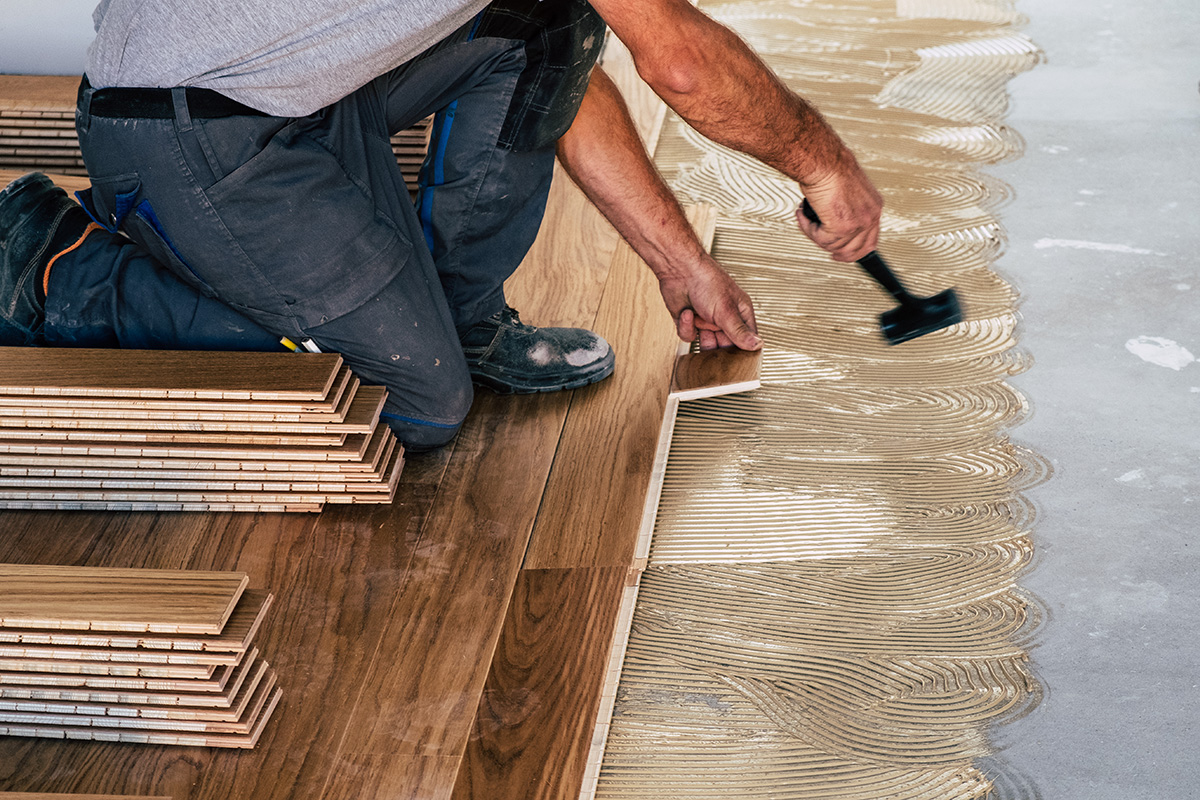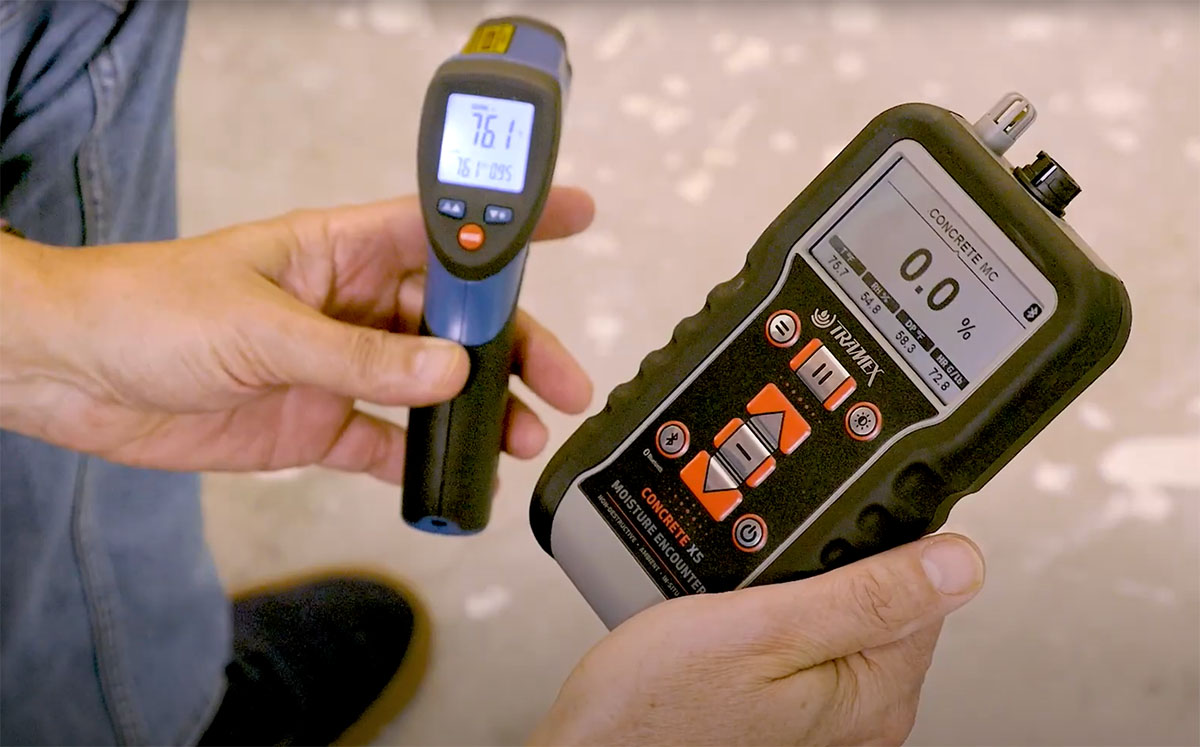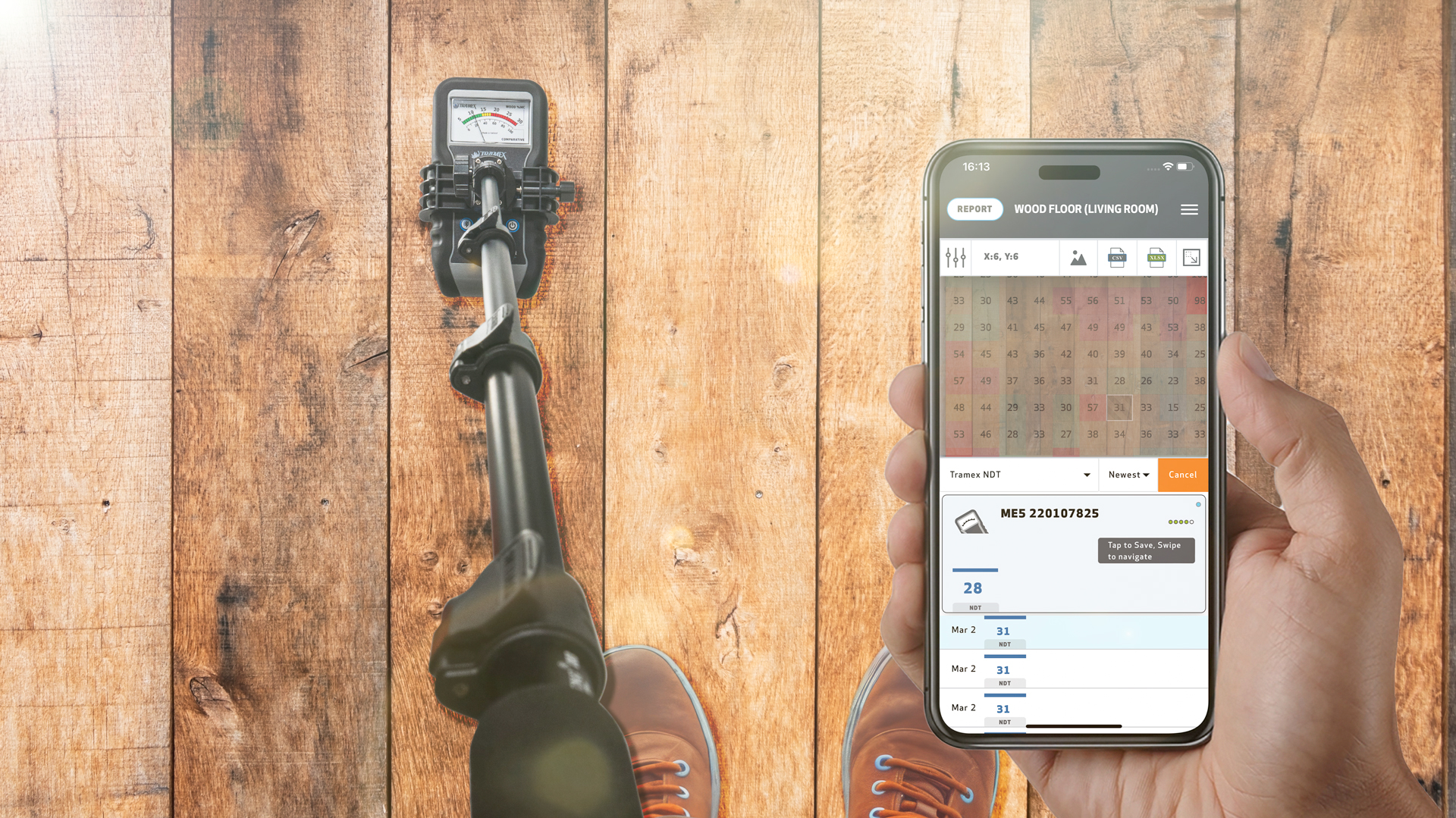
Floor installation is worth doing right the first time to make sure it doesn't turn into a costly and frustrating ordeal if moisture-related issues from improperly dried subfloors aren't addressed. One of the most common and detrimental mistakes in flooring installation is neglecting to ensure the subfloor is sufficiently dry. This can lead to costly problems such as warping, mold growth, and adhesive failure. Fortunately, these issues can be avoided with proper moisture testing, and Tramex moisture meters are an invaluable tool in this process.
The Importance of Dry Subfloors
Subfloors act as the foundation for any flooring installation. Whether you are laying hardwood, laminate, vinyl, or tile, the condition of the subfloor directly impacts the longevity and performance of your flooring. One of the critical aspects of subfloor preparation is ensuring it is dry enough to support the new flooring material. Excess moisture in the subfloor can lead to:
- Warping and Buckling: Moisture causes wooden subfloors to expand and contract, leading to warping and buckling of the flooring above.
- Mold and Mildew: Persistent moisture provides a breeding ground for mold and mildew, which can cause health issues and damage to the flooring.
- Adhesive Failures: For flooring types that rely on adhesives, excessive moisture can weaken the bond, causing the flooring to lift and shift.
Common Mistakes in Subfloor Moisture Management
1. Skipping Moisture Testing
One of the most critical yet commonly overlooked steps in flooring installation is moisture testing. Relying on guesswork or visual inspection to determine if a subfloor is dry is a potential recipe for disaster. Every subfloor, regardless of its material, for example concrete or wood, should be tested for moisture content before installation begins.
2. Using Incorrect Testing Methods
Even if moisture testing is performed, using inadequate or incorrect methods can lead to false readings. For example, using a pin-type moisture meter on a concrete subfloor may not provide an accurate assessment of its moisture content.
3. Using Equipment Incorrectly
Users of moisture testing equipment will benefit considerably by gaining an understanding of the testing methods and the meaning and interpretation of the results. In addition, the use of specifically designed Apps will facilitate the documentation of the test results and make it easy to share this documentation in reports for analysis.
4. Failing to Consider Seasonal Changes
Hygroscopic flooring materials such as hardwood, engineered wood and stone-cored floors will expand and contract if exposed to seasonal ambient changes of temperature and humidity. An experienced tester can make sure there is sufficient allowance for seasonal changes.

The Tramex Installation Quick Check Test is the best concrete moisture check test for a flooring installer to perform at the time of installation, even if pre-installation tests have been performed. It is quick, accurate and includes ambient relative humidity and surface temperature checks to detect potential dew-point issues. It can give the floor installer peace of mind that all moisture related bases are covered.
5. Ignoring Manufacturer Guidelines
Flooring manufacturers typically provide specific guidelines for acceptable moisture levels in subfloors. Ignoring these guidelines can void warranties and result in damage to the flooring.
How to Properly Test Subfloor Moisture with Tramex Moisture Meters
Tramex moisture meters are renowned for their accuracy and reliability, making them an excellent choice for ensuring your subfloor is ready for installation. Here’s how to use them effectively:
Step-by-Step Guide to Using Tramex Moisture Meters
1.Select the Right Meter for Your Subfloor Type:
- For concrete subfloors, use a Tramex Concrete Moisture Encounter for accurate moisture content percentage results. Refer to our information about concrete moisture testing as there are a number of reliable concrete moisture tests and the reading results can vary depending if it is newly poured or old concrete.
- For wooden subfloors, the Tramex wood moisture meters Moisture Encounter MEX5 or ME5 provide wood moisture content % readings. The shallow-depth measuring scale reads the moisture content without any interference from the substrate and the normal depth readings are good for identifying the source and extent of any moisture issues.
2. Check the meter’s calibration:
- This is optional but also prudent. If you are a floor installer you can check your Tramex meter’s calibration before you start your project using the Tramex calibration check plate or box, then geotag and save the results to the Tramex Meters App. This assurance of accurate readings can be added to your moisture inspection report.
3. Perform Multiple Tests and make a Moisture Map:
- Take readings at multiple points across the subfloor. Moisture levels can vary in different areas, so it is important to get a comprehensive view. Additionally, instant readings can be saved into moisture maps to create a visual representation with the Tramex Meters App. This map can be added to the moisture inspection report and can be revisited when needed to update readings or answer any future questions.

4. Check Against Acceptable Moisture Levels:
Always compare the readings with the acceptable moisture levels specified by your flooring manufacturer.
- For example, hardwood floors typically require wood subfloor moisture content to be below 12%.
- Concrete subfloors are generally dry enough at 3.5 to 4.5% moisture content. When testing concrete also look out for high and low readings. Moisture Content will show wet spots more accurately than RH as the air in the concrete tends to equalise.
- The in situ concrete probe can greatly increase the insight into the moisture condition of the concrete by understanding the relationship between the Moisture Content and Relative Humidity.
5. Address Moisture Issues:
- In many cases, all the floor covering required for adherence is for the bonding layer in the concrete to remain sufficiently dry for enough time so that adhesive epoxies and other applied coatings have sufficiently reacted.
- In other situations, where hygroscopic flooring such as wood, engineered or stone cored flooring are used, the in situ RH will also need to be considered.
Benefits of Using Tramex Moisture Meters
- Non-Destructive Testing: Tramex moisture meters use a combination of non-destructive and in situ tests to gain the most information from the least destructive testing methods. This allows for:
- Speed and Efficiency: Quickly obtain multiple readings across large areas.
- Versatility: Suitable for various subfloor materials including wood and concrete.
Tramex has developed moisture test kits for flooring installers, providing the necessary instruments to conduct a thorough moisture check before installing a floor covering.
Conclusion
Identifying and avoiding moisture-related problems during flooring installation starts with proper subfloor preparation.
By determining the moisture condition of the building and surface to be installed on, using Tramex moisture meter kits to ensure your subfloor is dry enough, you can prevent problems including osmotic blistering, warping and cupping, adhesive failure and even the possibility of mold growth.
Proper moisture testing is very valuable if measured in terms of peace of mind.
This article is presented by Tramex, a global leader in moisture and humidity measurement for more than 50 years. Our engineers and industry specialists work alongside professionals in building inspection, flooring, roofing and water damage restoration to provide accurate and reliable information. With decades of experience and innovation in non-destructive moisture detection, we share practical insights backed by science and real-world experience.